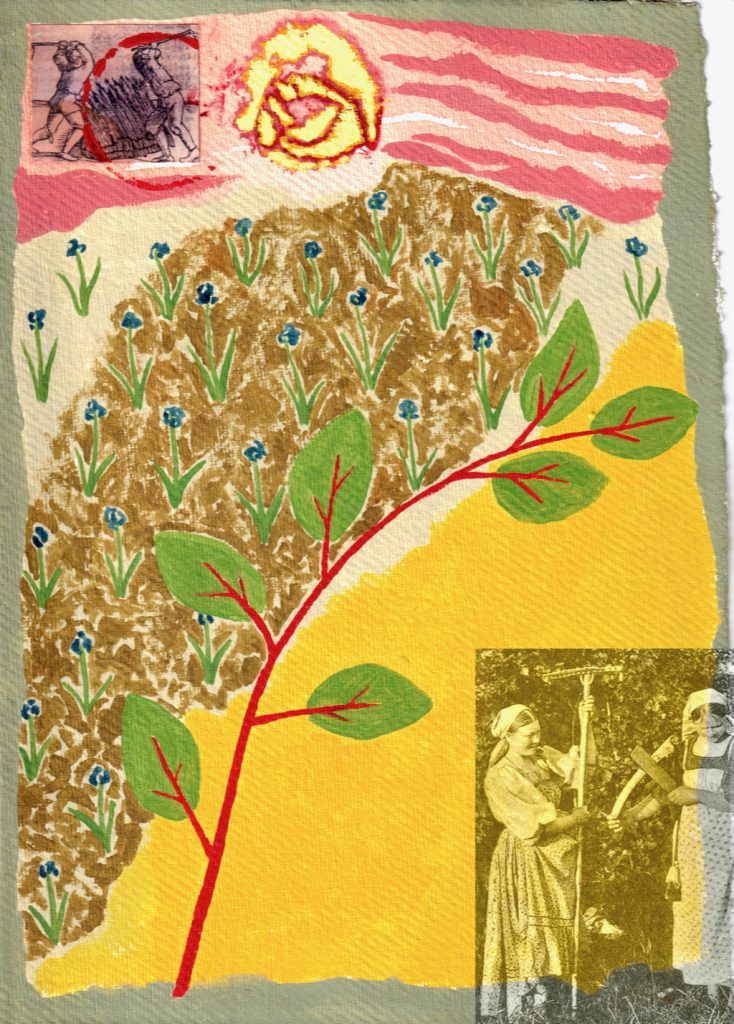
‘We consider ourselves to be developing a miniature culture as one of our attempts towards a Utopia Bach’.
UB
I was tempted to continue, to follow up on Filippa Dobson’s work on Skye around a woman buried with some ceremony along with willow catkins, water lilies, red campion and holly flowers. A woman who may have been a doorkeeper, guardian, or the last servant of the Goddess. Work that explores the cave’s closure and of the possible relationship between the woman and two infants buried there, all roughly contemporary. They lived around CE 28–230, and may have been implicated in the carrying of pneumonic plague to Skye. I told myself that to do so would close the circle on a world under threat from pandemic. But to continue would have been to fail to see that this hunting for traces in the past could become both academic and addictive, could undermine my ability to live the connections between hinterlands and what is present day-by-day.
What changed everything was a chance event witnessed while waiting for N. in Alston. A sighting that answered my question about the “grounding” of all Artemis stands for. A willowy tomboy in cut-off jeans and sweatshirt, maybe eight or ten, appeared from the back of a beaten-up old Landrover. She radiated an absolute self-possession that seemed all of a piece with her make-shift bow – a flexed wand of wood bent taut by its string – that was slung across her shoulder. She then half strode, half danced towards the Co-Op, followed at a respectful distance by her father and younger brother. All three disappeared inside and I saw no more of them.
I took her appearance as a sign from the Grey-eyed One that my work was done, that I should now start spending more time growing back down into the everyday world again. A signal that it was time to let go and move on. I almost wrote “to go home”. But as we prepare to return south again I am, as always, troubled about not knowing where, exactly, “home” is. Then I remembered two lines by Naomi Shihab Nye about her father:
…in the huge air, your one real home
for all the days you walked among us.
(2015) op. cit. p.170).
Lines that took me, in turn, back to David Abram’s words in The Spell of the Sensuous:
‘For the Navajo, then, the Air – particularly in its capacity to provide awareness, thought, and speech – has properties that European, alphabetic civilization has traditionally ascribed to an interior, individual human “mind” or “psyche”. Yet by attributing these powers to the Air, and by insisting that the “Winds within us” are thoroughly continuous with the wind at large – with the invisible medium in which we are immersed – the Navajo elders suggest that that which we call the “mind” is not ours, is not a human possession. Rather, mind as Wind [Naomi Shihab Nye’s ‘the huge air”] is a property of the encompassing world, in which humans – like all other beings – participate’. (1996) The Spell of the Sensuous: Perception and Language in a More-than-Human World New York, Vintage Books p. 237).